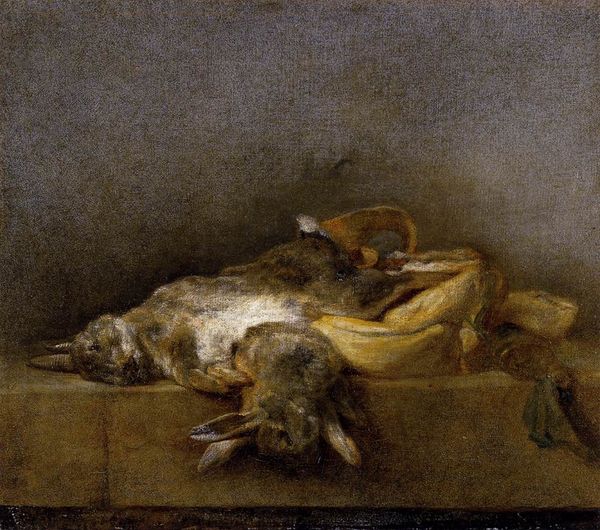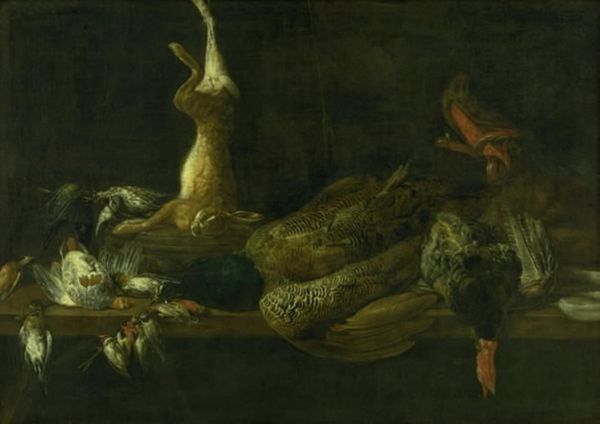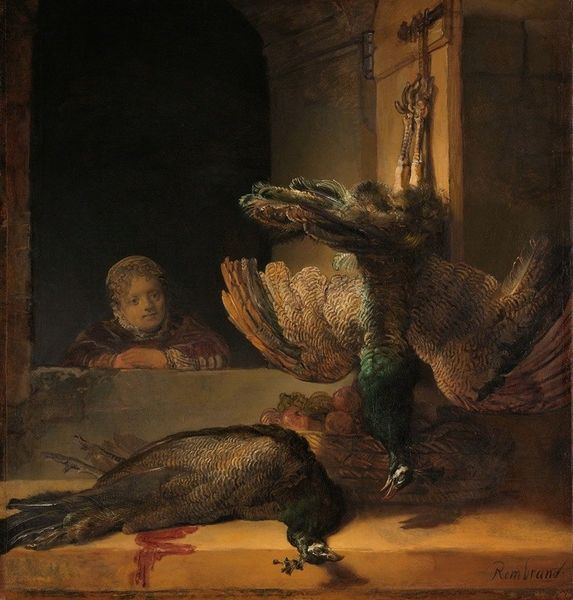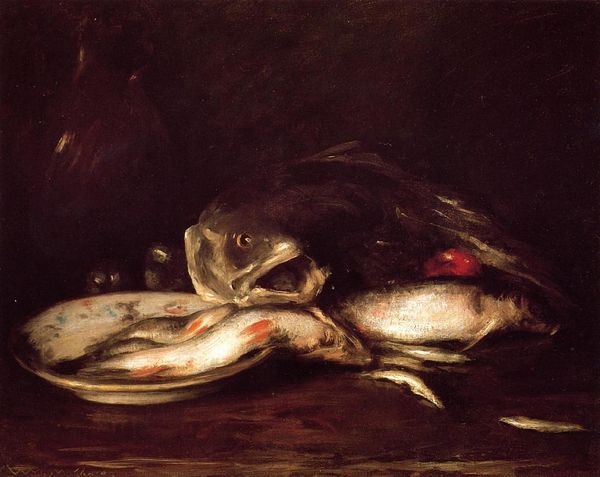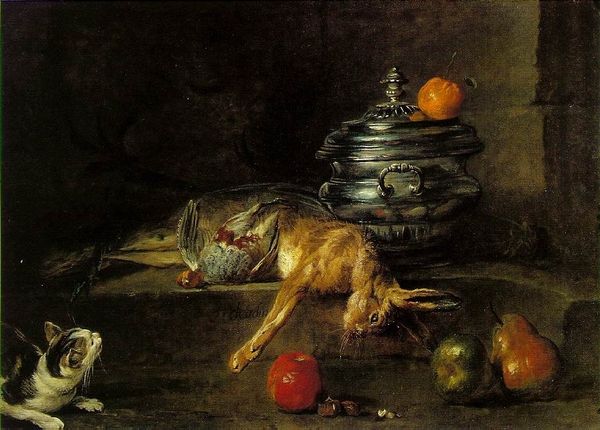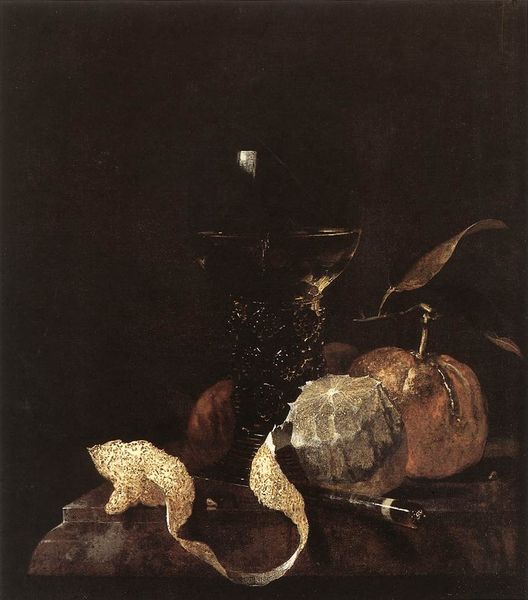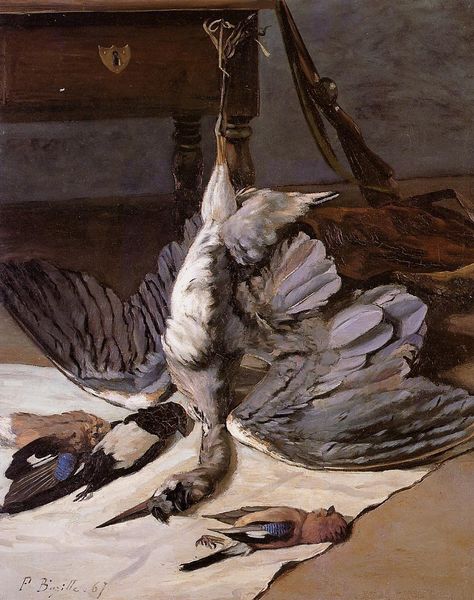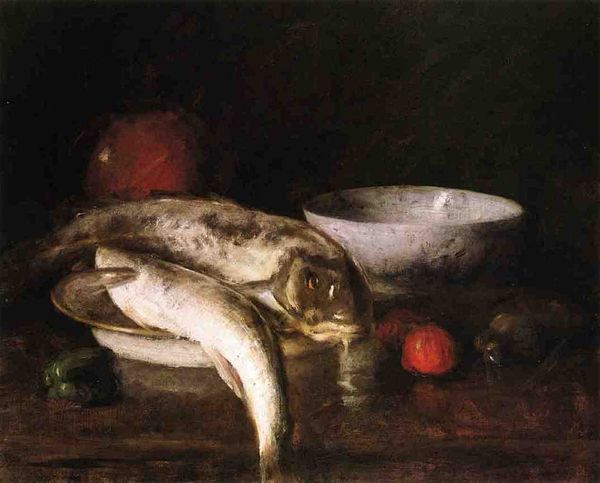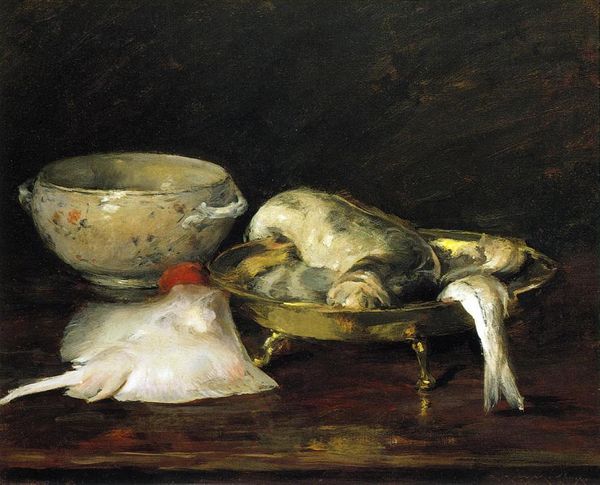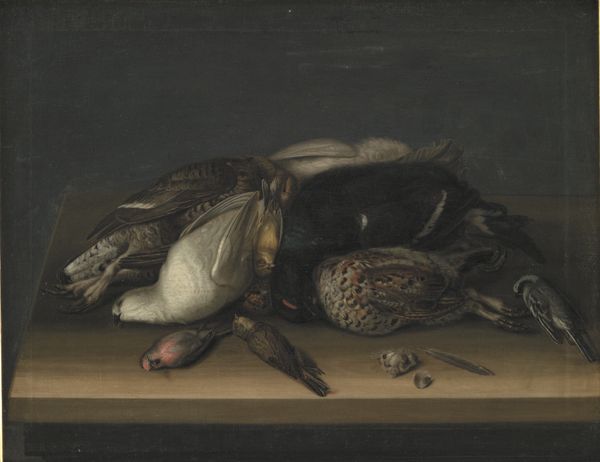
painting, oil-paint
#
baroque
#
painting
#
oil-paint
#
oil painting
#
vanitas
#
genre-painting
#
rococo
Dimensions: 50 x 60 cm
Copyright: Public domain
Curator: Here we have "Still Life with Pheasant," created around 1750 by Jean-Baptiste-Siméon Chardin. It's an oil painting. Editor: Somber, isn't it? Quite a restrained palette...mostly browns and greys. Gives a real sense of weight and stillness. The way the pheasant and rabbit are positioned, it speaks to mortality, rawly. Curator: It’s a fascinating example of Rococo engagement with the vanitas tradition, but through the lens of genre painting. It reminds us that depictions of everyday life often carried symbolic weight. The controlled display of the dead animals—the trappings of a well-stocked larder. Editor: Indeed. I'm drawn to the surface texture; the way Chardin builds up the paint. You can almost feel the down of the pheasant, the coarse fur of the rabbit. Did he spend much time as an artisan early in his career, crafting objects? Because I wonder if that didn't give him an intense material empathy, visible here. Curator: He was admitted to the Académie de Saint-Luc in 1724 and later to the Académie Royale. These institutions really shaped an artist's career path and determined what was valued as "art" versus craft, with paintings often deemed superior. The placement of such still-lifes within the broader social fabric highlights societal priorities, access, and perhaps a touch of excess during that time. Editor: Right. You have this very still life that likely became food that in turn required labor from farmers, hunters, servants. All of it, now just an arranged display on canvas. A commodity chain frozen in time. How far removed were Chardin’s viewers from the realities of obtaining such a meal? Curator: Absolutely. And the fact that we are viewing it in this specific setting adds another layer. Who had access to this painting, originally? How does that contrast with a contemporary museum audience? It becomes an exercise in seeing class, privilege, and shifting contexts across time. Editor: True. To see the artistic skill combined with an implicit narrative makes you question where art, labor, and sustenance meet. It elevates everyday materiality. Curator: A complex composition. Editor: And one that invites us to consider art's many lives.
Comments
No comments
Be the first to comment and join the conversation on the ultimate creative platform.
